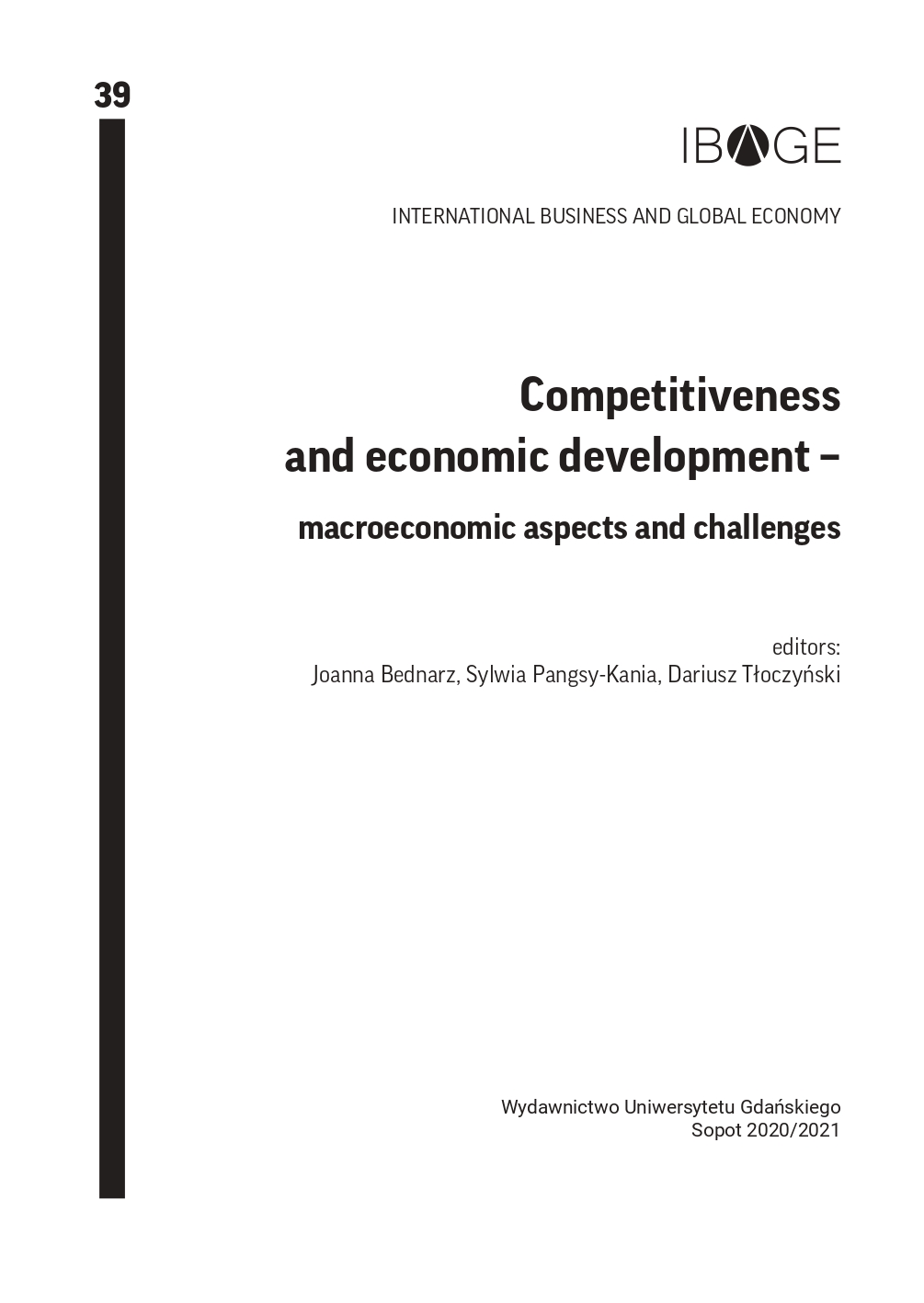Pension efficiency in European Union countries after the 2008 financial crisis – lessons for the next turmoil
Słowa kluczowe:
pension system efficiency, financial crisis, principal component analysis, multi-informationAbstrakt
The pension system is one of the most challenging parts of a country’s social security system, as demographic change hits many macroeconomic stability concerns – public debt in particular. The 2008 financial crisis revealed fiscal imbalances in many European countries, which made their governments reform the pension systems. Demographic change is the primary determinant of pension system performance, but not the only one. Its efficiency is measured in three dimensions: sustainability (impact on labor market, pension expenditures), adequacy (reduction of old-age income poverty), and modernization (gender inequality). Since the 2008 crisis, many European countries have lost macroeconomic soundness (Greece is a notable example). This, in turn, interferes with pension system efficiency. This paper aims to investigate the link between the 2008 crisis and pension system efficiency in the three mentioned dimensions. We hypothesize that the former has had a negative impact on all three of them. In order to evaluate our hypothesis, we use data on pension system efficiency provided by Chybalski and Gumola as our dependent variables and crisis factors provided by Bernanke as our independent variables. To ensure that the set of macroeconomic variables is consistent with Bernanke’s, we apply principal component analysis to real economic data and compare it with Bernanke’s using multi-information. We found that the 2008 crisis reduced the sustainability and modernization level of European pension systems but, surprisingly, enhanced their adequacy.
Downloads
Bibliografia
Arellano M., 2003, Panel data econometrics, Oxford University Press, Oxford.
Bernanke B., 1983, Nonmonetary effects of the financial crisis in the propagation of the great depression, American Economic Review, no. 3.
Bernanke B., 1990, On the predictive power of interest rates and interest rate spreads, New England Economic Review, issue Nov.
Bernanke B., 2018, The real effects of the financial crisis, BPEA Conference Drafts, 13–14 September, brookings.edu/wp-content/uploads/2018/09/BPEA_Fall2018_The-real-effectsof-the-financial-crisis.pdf [access: 12.12.2019].
Blinder A.S., 2010, Quantitative easing: Entrance and exit strategies, Federal Reserve Bank of St. Louis Review, issue Nov./Dec.
Chybalski F., 2012, Measuring the multidimensional adequacy of pension systems in European countries, Pensions Institute, Cass Business School, City University London, Discussion Paper PI-1204.
Chybalski F., Gumola M., 2018, The similarity of European pension systems in terms of OMC objectives: A cross-country study, Social Policy & Administration, no. 7.
EC, 2001, Supporting national strategies for safe and sustainable pensions through an integrated approach, European Commission, Brussels.
EC, 2012, Pension adequacy in the European Union 2010–2050, ec.europa.eu/social/BlobServlet?docId=7805&langId=en [access: 8.07.2020].
Filoso V., Panico C., Papagni E., Purificato F., Suarez M.V., 2017, Causes and timing of the European debt crisis: An econometric evaluation, EERI Research Paper no. 03/2017, econstor.eu/bitstream/10419/179404/1/EERI_RP_2017_03.pdf [access: 7.01.2020].
Friedman M., Schwartz A., 1963, A monetary history of the United States, 1867–1960, Princeton University Press, Princeton.
Kacperczyk M., Schnabl Ph., 2010, When safe proved risky: Commercial paper during the financial crisis of 2007–2009, Journal of Economic Perspectives, no. 1.
Meyer P.E., 2008, Information-theoretic variable selection and network inference from microarray data, PhD thesis, Universite Libre de Bruxelles.
OECD, 2012, OECD pensions outlook 2012, OECD Publishing, Paris.
OECD, 2014, OECD pensions outlook 2014, OECD Publishing, Paris.
Syneonidis G., 2016, The Greek pension reform strategy 2010–2016, Social Protection & Labor, Discussion Paper no. 1601.
Pjanić M., Milenković N., Andrašić J., Kalaš B., Mirović V., 2020, Public debt’s predictors in EU: Evidence from members and non-members of European Monetary Union, Economic Research – Ekonomska Istraivanja, no. 1.
Evidence from members and non-members of European Monetary Union, Economic Research – Ekonomska Istraivanja, no. 1.
Triggs A., Kharas H., 2020, The triple economic shock of COVID-19 and priorities for an emergency G-20 leader meeting, brookings.edu/blog/future-development/2020/03/17/the-tripleeconomic-shock-of-covid-19-and-priorities-for-an-emergency-g-20-leaders-meeting [access: 18.03.2022].

 Uniwersyteckie Czasopisma Naukowe
Uniwersyteckie Czasopisma Naukowe




